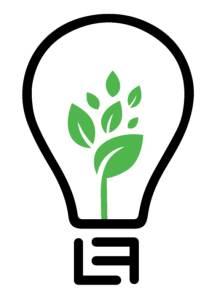Сommunity action Module - How to start and implement an activity or event
5. Session: Project management
Welcome to your fifth session of the Community action module!
It will take you 4 hour to complete it.
Learning outcomes:
At the end of this session, participants will be able to:
-
define the project implementation steps
-
develop a project activity plan;
-
develop a project timetable.
Facilitators instructions
Using the available slides, explain to the participants the definition of a project, the main features of a project, the phases of the project life cycle - initiation phase, planning, executing, monitoring and controlling, closure. Together with the participants, develop the project idea, discuss them.
-
What is a project?
A project is a temporary, structured effort undertaken to create a unique product, service, or result. It is designed to achieve specific goals within a defined scope, timeline, and set of resources. Projects are often used to bring about change or address a particular problem, and they are characterized by having clear objectives, deliverables, and stakeholders.
Key Characteristics of a Project:
-
Temporary: Projects have a clear beginning and end. They are not ongoing like operational tasks.
-
Unique Outcome: The result of a project is distinct, whether it’s a new product, service, process, or improvement.
-
Defined Scope: The objectives and boundaries of the project are established at the start.
-
Specific Resources: Projects require allocated resources, such as time, money, people, and materials.
-
Stages of the Project Life Cycle
2.1. Initiation Phase
Purpose: Define the project's purpose, goals, and feasibility.
Key Activities:
-
Identify the problem or opportunity.
-
Define project objectives and scope.
-
Conduct feasibility studies or a business case analysis.
-
Identify stakeholders and key requirements.
-
Obtain project approval or funding.
Deliverables:
High-level project plan or proposal.
2.2. Planning Phase
Purpose: Develop a detailed roadmap for how the project will be executed.
Key Activities:
-
Define the project scope in detail (Work Breakdown Structure).
-
Develop schedules, timelines, and milestones.
-
Estimate resources and budget.
-
Assess risks and create a risk management plan.
-
Assign tasks and responsibilities.
-
Develop a communication plan.
Deliverables:
-
Comprehensive project plan.
-
Budget and resource allocation plan.
-
Risk management and contingency plans.
2.3. Executing Phase:
Purpose: Carry out the project plan and deliver the intended outcomes.
Key Activities:
-
Assemble and manage the project team.
-
Execute tasks according to the project plan.
-
Monitor progress and ensure alignment with objectives.
-
Communicate regularly with stakeholders.
-
Manage resources and address challenges as they arise.
Deliverables:
-
Work products or deliverables specified in the project plan.
-
Regular progress reports.
2.4. Monitoring and Controlling Phase (Often overlaps with Implementation)
Purpose: Track and measure project performance to ensure it stays on track.
Key Activities:
-
Monitor project performance using KPIs (Key Performance Indicators).
-
Compare progress against the project plan.
-
Identify and address deviations from the plan.
-
Update stakeholders and adjust the plan as needed.
Deliverables:
-
Status reports.
2.5. Closure Phase
Purpose: Finalize the project and ensure all objectives are met.
Key Activities:
-
Confirm that all deliverables have been completed and meet quality standards.
-
Conduct a project review or post-mortem analysis.
-
Release resources and disband the project team.
-
Document lessons learned for future projects.
-
Celebrate project success and share results with stakeholders.
Deliverables:
-
Final project report.
-
Lessons learned document.
-
Client or stakeholder approval of deliverables.
-
Practical work
In groups or individually, develop a presentation of community action activities based on what you learned in PART 5.
